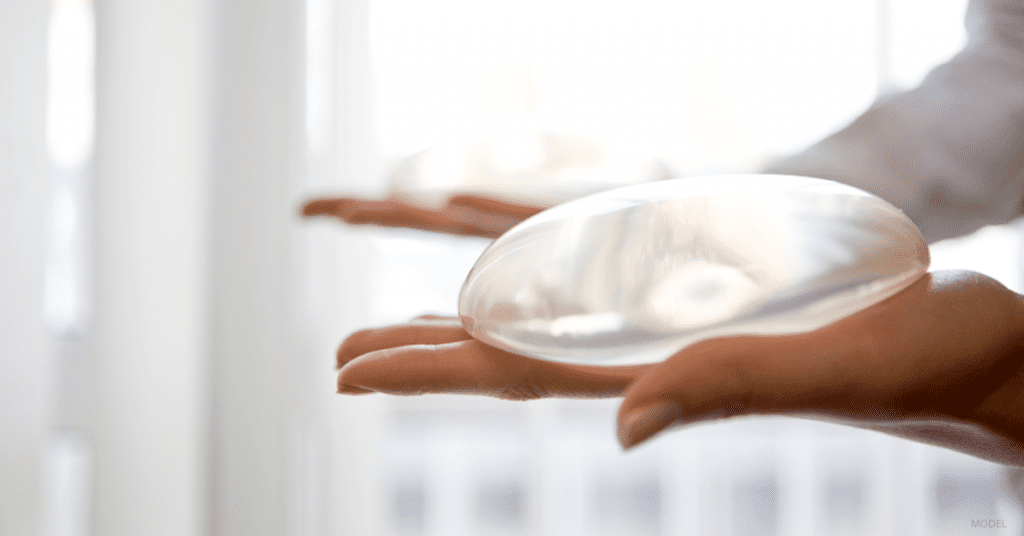Patients who come to us for breast augmentation can choose from a variety of options to achieve their desired results. Silicone, saline, or fat grafting—which is the best option for you? In this post, we will explain some important differences among the surgeries to help you better understand your options when you come in for a consultation.
Silicone Implants
Silicone implants are filled with silicone gel. Silicone implants are the most widely used implant in the United States and abroad. Silicone implants are fully FDA-approved for women 22 and older and have been determined to be a safe medical device with a lower risk of rupture than saline implants.
Benefits
Many women prefer silicone implants because they have a more natural look and feel and are less susceptible to rippling or wrinkling.
As you can see in the pictures above, a wide range of profiles can be achieved with silicone implants, from a natural teardrop shape to a rounder, fuller projection. You can also choose among different levels of silicone gel cohesiveness; some people prefer gel consistency that provides more firmness and projection, while others choose less projection and a softer outcome.
Learn more about how your lifestyle may affect your implant choice in our related blog post.
Cautions
In the rare case of a gel defect, the cohesive silicone filling will remain inside the breast capsule until it is surgically removed. Because silicone implants hold their shape when their shell is torn, the FDA recommends regular screenings to detect these “silent” ruptures.
Saline Implants
Saline implants have a silicone outer shell filled with a sterile saltwater solution.
Benefits
They are inserted empty and filled once they are in place, allowing surgeons to use a smaller incision. If a saline implant ruptures, the body will naturally (and harmlessly) absorb the solution inside.
Typically, saline implants have a smooth and round shape, and although slightly less expensive, saline implants have become much less common in recent years. However, they are used in special circumstances when the patient is between the ages of 18 and 21.
Cautions
Saline implants tend to have more visible rippling, and some people believe they don’t feel as much like natural breast tissue as saline implants.
Fat Grafting
Fat grafting (also known as fat transfer) is a process that enhances the breast using the patient’s own unwanted fat taken from areas such as the abdomen, hips, or thighs. The fat is first extracted using liposuction and then processed with a centrifuge or a device such as the Revolve™ fat processing device. Once processed, the fat is injected into the breasts.
Benefits
The procedure involves only very small incisions, which are usually not visible after healing is complete. There is no chance of your body rejecting the substance because your own fat is being injected. However, results may be less permanent, as fat can be absorbed or broken down over time.
Of the various augmentation options, this method usually produces the most subtle changes.
Cautions
Fat transfer breast augmentation can typically only achieve about a half-cup increase in breast size long-term. Multiple transfers may be required to achieve your desired results.
The recovery time for a breast augmentation with fat grafting is similar for breast augmentation with implants. Recovery is more dependent on the liposuction aspect of the procedure than the actual fat injections. The Aesthetic Society discusses some important things you should consider before choosing fat transfer.
Which Type of Augmentation Is Best for You?
Ultimately, your final decision should depend on your anatomy and expectations. Our doctors can help you determine which option is best for you. Visit our online photo gallery to get a better idea of your potential with breast augmentation surgery. If you are ready to take the next steps, request a consultation online or call our office at (434) 924-1234.



Leave a Reply